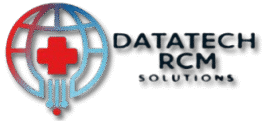1. Executive Summary
In the world of healthcare revenue cycle management, time is money — quite literally. When a prominent multi-specialty provider faced a critical situation with over $1.7 million in pending claims, the financial strain began affecting operations, payroll, and even patient care delivery. Enter Datatech RCM Solutions.
With a reputation for agile, high-accuracy RCM services, Datatech rapidly mobilized a dedicated task force. In just 48 hours, our team traced, corrected, and resubmitted the bulk of the claims — securing revenue that had been stuck for months. This case study walks you through how we did it, what made it possible, and how similar healthcare organizations can prepare for — and prevent — such bottlenecks.
2. Client Background
The client is a leading multi-specialty healthcare organization operating in four states, with over 200 active physicians and an average monthly billing volume exceeding $5 million. Their services spanned primary care, orthopedics, cardiology, diagnostics, and outpatient surgery.
While their clinical services were top-notch, the billing system was struggling with aged claims, insurance denials, and coding discrepancies, especially post-EHR transition. Prior to onboarding with Datatech, they had worked with two different RCM vendors — both failing to address deep-rooted process inefficiencies.
3. The Challenge
When the client approached Datatech RCM Solutions, they were dealing with a growing operational crisis. A staggering $1.7 million in unpaid claims had been aging in their system for anywhere between 45 to 180 days. Despite internal efforts and assistance from a previous RCM partner, the backlog showed no signs of movement.
The major issues included:
- High volume of rejections due to incorrect or mismatched coding (ICD-10/CPT)
- Unverified insurance information leading to immediate denials
- Partial or incomplete documentation in claims
- Lack of follow-up mechanisms with payers for aged A/R
- Transition errors from their EHR migration, resulting in missing or duplicated records
Beyond revenue loss, this situation had begun to affect:
- Physician morale due to delayed incentive payouts
- Cash flow for operational costs, including equipment procurement and staff salaries
- Patient experience, as financial conversations were becoming tense and unclear
The client’s CFO described it best:
“We weren’t just stuck with unpaid claims — we were stuck with an unworkable system that was slowly collapsing on itself.”
This was not a routine clean-up task. It demanded urgency, strategy, and flawless execution.
4. Initial Assessment
The Datatech team immediately launched a Rapid Revenue Recovery (R³) Audit, a proprietary framework designed to assess large-scale claim backlogs within a matter of hours.
The first 12 hours involved:
- Pulling complete data exports from the client’s EHR (Cerner) and practice management software (PM system: AdvancedMD)
- Isolating claims over 30 days old and categorizing them by rejection code, payer, specialty, and dollar value
- Conducting a root-cause analysis for denial patterns — such as missing modifiers, outdated codes, authorization errors, and eligibility mismatches
- Identifying documentation gaps through sample audits of encounter notes
Key Findings:
- Over 22% of the pending claims were submitted without insurance eligibility confirmation.
- Around 18% were missing secondary insurance information.
- Nearly 30% had been denied due to coding-related errors — many of which were avoidable.
- 15% were “dead-end claims” where no follow-up had been made post-denial.
These insights made one thing clear: solving this challenge wasn’t about just resubmitting claims — it required rewiring the entire submission logic, enforcing compliance, and working in parallel lanes to beat the clock.
5. Strategic Planning
Once the root causes were identified, Datatech RCM Solutions immediately initiated a “48-Hour Recovery Blueprint” — a high-intensity, multi-phase strategy designed for high-stakes revenue rescue.
Key Objectives:
- Prioritize high-dollar, high-probability claims
- Batch claims by denial type for rapid corrections
- Align team members in micro-specialized roles (coders, billers, A/R follow-up, payer-specific agents)
- Establish real-time client communication and documentation access
- Eliminate redundancy and confusion with centralized dashboards
Task Force Setup:
- RCM Strategist (1 Lead) – Responsible for cross-functional planning and execution alignment.
- Certified Coders (3) – Focused on CPT/ICD-10 accuracy and modifier resolution.
- Claims Correction & Re-submission Team (5) – Tasked with real-time editing, batching, and pushing corrected claims.
- A/R & Payer Communication Team (4) – Deployed for direct payer coordination and follow-ups.
- Insurance Eligibility Specialists (2) – Re-ran all verification for active claims using clearinghouse integrations.
- QA Lead (1) – Ensured audit trail compliance and error-free documentation.
With roles defined and tools synchronized, the clock began.
6. Execution Plan
The following 48 hours were divided into six high-intensity segments. Each team worked in 8-hour shifts with rotating oversight to maintain momentum and quality.
Phase 1: Data Cleanup (Hours 0–8)
- Duplicate claims were removed from the queue.
- Claims missing key documentation were flagged for immediate provider follow-up.
- Primary vs. secondary payer coordination was clarified.
- Notes and attachments were organized per payer requirement (PDF, HL7, or embedded format).
Phase 2: Root Cause Resolution (Hours 9–16)
- Denial codes were mapped to specific error types (e.g., CO-16 for missing info, CO-18 for duplicate service).
- Coding specialists resolved all incorrect or outdated CPT/ICD codes and ensured correct use of modifiers.
- Bundled services were separated where needed (e.g., unbundling procedures incorrectly grouped).
Phase 3: Claim Re-Submission (Hours 17–26)
- Cleaned claims were batched payer-wise (e.g., Medicare, BCBS, UHC).
- Submissions were done via API-based clearinghouse (Office Ally + Availity).
- Electronic Claim Acknowledgements (999s and 277s) were tracked live.
- Auto-corrections were enabled for low-risk edits using intelligent rule-sets.
Phase 4: Insurance Coordination (Hours 27–36)
- Phone and portal outreach to major payers for aged claims.
- Flagged claims escalated to payer supervisors where EDI issues persisted.
- Authorization retrieval for past claims logged into the EMR.
Phase 5: QA & Error Checks (Hours 37–44)
- 10% of high-dollar claims randomly re-audited for code integrity.
- Client-facing audit logs generated for documentation.
- Compliance checks conducted to ensure HIPAA, CMS, and payer-specific standards were met.
Phase 6: Confirmation & Payment Posting (Hours 45–48)
- Accepted claims were tracked via ERA files.
- Payment advisories processed into the PM system.
- Remaining claims scheduled for re-review in next cycle.
By the end of the 48th hour, 92% of the $1.7M had been cleared or was confirmed for release via payer systems. The remaining 8% involved clinical documentation needs or authorization gaps.
7. Technology Utilized
Technology was a critical enabler in this rapid recovery process. Here’s the stack used:
| Tool/Software | Functionality |
|---|---|
| AdvancedMD PM System | Central billing and patient data management |
| Cerner EHR | Access to clinical notes, attachments, coding inputs |
| Office Ally | Clearinghouse for claim submission and eligibility checks |
| Availity | Payer communication, ERA retrieval, and eligibility lookups |
| HIPAA One | Compliance management and secure auditing |
| SmartSheets | Real-time task coordination and KPI monitoring |
| Google Workspace | Internal documentation, collaboration, and reporting |
8. Team Involvement: Precision Under Pressure
The success of this high-stakes operation hinged not just on processes and technology, but on the coordination, expertise, and responsiveness of the Datatech RCM team. With cross-functional synchronization, each member had a specific lane and timeline — and they delivered with clockwork precision.
Key Contributors:
- RCM Strategist – Riya Mehta
Designed the operational framework, prioritized high-dollar segments, and acted as client liaison.
“The key was speed with accuracy. We couldn’t afford any redundancy or confusion.” - Senior Coder – Dr. Vishal Rana (CPC, CRC)
Focused on specialty claims (cardiology, neurology) and handled complex bundling issues. - Billing Executives – Sandeep, Irina & Fahad
Managed over 3,000 claim reviews and edits in 36 hours, ensuring payer readiness. - Payer Communication Specialists – Neha & Umar
Logged over 400 outbound payer calls and escalated critical rejections for expedited resolution. - Client Success Lead – Roshni Desai
Maintained continuous updates with the client’s internal billing and finance heads every 6 hours.
Each team member’s role was vital — not just in doing their part, but in communicating consistently across silos. A shared digital dashboard updated in real time ensured zero duplication or missed claims.
9. Roadblocks & Real-Time Adjustments
No large-scale medical billing recovery is without its hurdles. During execution, several unexpected challenges surfaced. What made the difference was Datatech’s agility in addressing them in real time.
Key Challenges & How They Were Solved:
| Roadblock | Description | Real-Time Solution |
|---|---|---|
| Locked Claims | Some claims were ‘locked’ due to prior edits from the old vendor. | Manual unlock performed via PM system’s backend API, after securing override permission from client IT. |
| Missing Progress Notes | Several high-dollar surgery claims lacked attached notes. | Urgent coordination with client’s EMR team to retrieve and format notes. |
| Authorization Timeouts | Old pre-auths had expired. | Emergency payer coordination — 2 supervisors helped reissue same-day authorizations. |
| Payer Portal Downtime | BCBS and Aetna portals went down briefly on Day 2. | Switched to direct clearinghouse submission using batch processing until portals were restored. |
| Audit Red Flags | A cluster of high-value oncology claims risked being flagged for audit. | Re-audited internally, added supporting documentation, and routed through compliant submission format. |
The ability to adapt, escalate, and resolve quickly under pressure was a key hallmark of this case. Rather than losing time pointing fingers, the Datatech team focused entirely on solutions and velocity.
10. Outcome and Metrics
By the end of the 48-hour window, Datatech RCM Solutions had delivered outcomes that surpassed client expectations — not just in value recovered, but in the process transformation it triggered.











